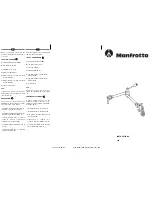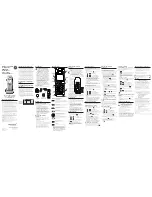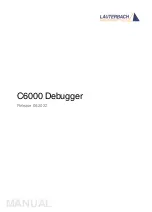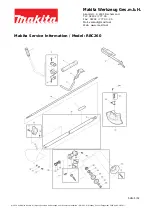
12
VEGAPULS 51K … 54K
21750-EN-031222
Mounting on DIN socket piece
In vessels with dished or rounded tops, the
antenna length should at least correspond to
the length of the longer sockets.
Mounting on a dished vessel top
3.2 Measurement of liquids
Flange antennas
Horn antenna on DIN socket piece
Radar sensors are usually mounted on short
DIN socket pieces. The lower side of the
instrument flange is the reference plane for
the measuring range. The antenna should
always protrude out of the flange pipe.
If the DIN socket piece is longer, make sure
that the horn antenna does not appear in the
socket opening.Better results are achieved
when the antenna protrudes at least 10 mm
out of the socket.
Vessel center or
symmetric axis
> 10 mm
> 10 mm
Reference plane
Mounting and installation
Emission cone and false reflections
The radar signals are focused by the an-
tenna system. The signals leave the antenna
in a conical path similar to the beam pattern
of a spotlight. This emission cone depends
on the antenna used. Any object in this beam
cone causes a reflection of the radar signals.
Within the first few meters of the beam cone,
tubes, struts or other installations can inter-
fere with the measurement. At a distance of 6
m, the false echo of a strut has an amplitude
nine times greater than that at a distance of
18 m.
At greater distances, the energy of the radar
signal distributes itself over a larger area,
thus causing weaker echoes from obstruct-
ing surfaces. The interfering signals are
therefore less critical than those at close
range.
Make sure the sensor axis is perpendicular
to the product surface and avoid, if possible,
vessel installations (e.g. pipes and struts)
within the 50 % area of the emission cone.
The illustrations of the emission cone are
simplified and represent only the main beam
- a number of weaker beams also exists.
Under difficult measuring conditions, the
antenna alignment must be selected with the
objective of reaching the lowest possible
echo intensity. Only giving attention to the
size of the useful echo is not adequate when
measuring conditions are unfavourable.
In difficult measuring environments, search-
ing for a mounting location with the lowest
possible false echo intensity will bring the
best results. In most cases, the useful echo
will then be present with sufficient strength.
With the adjustment software PACTware
TM
on
the PC, you can have a look at the echo im-
age and optimise the mounting location (see
chapter „5.2 Adjustment with the PC – Sensor
optimisation – Echo curve“).
If possible, provide a „clear view" of the
product inside the emission cone and avoid
vessel installations in the first third of the
emission cone.
Optimum measuring conditions exist when
the emission cone reaches the measured
product perpendicularly and when it is free of
obstructions.
Summary of Contents for VEGAPULS 51K
Page 1: ...Operating Instructions VEGAPULS 51K 54K 4 20 mA HART compact sensor...
Page 41: ...VEGAPULS 51K 54K 41 21750 EN 031222 Rx VEGAMET VEGALOG Ri 250 250 Ri 250 Set up PLC PLC...
Page 49: ...VEGAPULS 51K 54K 49 21750 EN 031222 Set up VEGALOG VEGAMET Rx...
Page 70: ...70 VEGAPULS 51K 54K 21750 EN 031222 Supplement CE declaration of conformity...
Page 71: ...VEGAPULS 51K 54K 71 21750 EN 031222 Supplement...













































